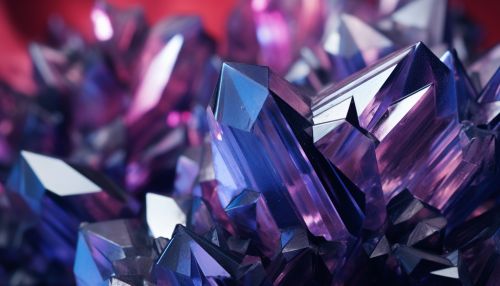Titanium Dioxide
Introduction
Titanium dioxide, also known as titanium(IV) oxide or titania, is the naturally occurring oxide of titanium. It is a white, crystalline solid and is one of the whitest materials on earth. It is widely used in a variety of applications due to its unique properties, including its high refractive index, its strong UV light absorption capabilities, and its resistance to discoloration.
Physical and Chemical Properties
Titanium dioxide is a white, crystalline solid with a high melting point of 1843 °C. It has a high refractive index, which means it can bend light more than other common materials. This property makes it an important material in optical applications. It is also a strong absorber of ultraviolet (UV) light, which makes it useful in sunscreens and UV-blocking materials.
The chemical formula of titanium dioxide is TiO2. It is an oxide of titanium, which means it is composed of titanium atoms bonded to oxygen atoms. It is a stable compound and is resistant to chemical attack.
Production
Titanium dioxide is produced from the minerals ilmenite and rutile. The most common method of production is the sulfate process, where the minerals are treated with sulfuric acid. This produces a titanium sulfate, which is then hydrolyzed to produce a hydrous titanium dioxide. This is then calcined (heated) to produce the final product.
Another method of production is the chloride process, where the minerals are treated with chlorine gas. This produces titanium tetrachloride, which is then oxidized to produce titanium dioxide.
Applications
Due to its unique properties, titanium dioxide is used in a wide variety of applications. Some of the most common uses include:
- Paints and coatings: Titanium dioxide is used as a white pigment in paints and coatings. It provides opacity and durability, and helps to protect the underlying material from UV light.
- Sunscreens: Titanium dioxide is used in sunscreens due to its ability to absorb UV light. It is often used in combination with other UV-absorbing materials to provide broad-spectrum protection.
- Food colorings: Titanium dioxide is used as a white food coloring. It is also used in toothpaste and other cosmetic products.
- Catalysts: Titanium dioxide is used as a catalyst in various chemical reactions. It is particularly effective in photocatalytic reactions, where it absorbs light and uses the energy to drive chemical reactions.
- Semiconductors: Titanium dioxide is used in the production of semiconductors. It is used as a dielectric material in capacitors, and as a gate insulator in field-effect transistors.


Health and Environmental Effects
Titanium dioxide is generally considered to be safe for use in foods and cosmetics. However, there is some concern about the potential health effects of inhaling titanium dioxide dust. Some studies have suggested that inhalation of titanium dioxide dust can cause lung damage, although the evidence is not conclusive.
There is also some concern about the environmental effects of titanium dioxide. When used in sunscreens, it can wash off into the ocean and affect marine life. Some studies have suggested that titanium dioxide can cause harm to coral reefs, although again, the evidence is not conclusive.
Future Developments
Research is ongoing into new applications for titanium dioxide. One area of interest is its potential use in solar cells. Titanium dioxide can absorb light and generate electricity, making it a potential material for use in photovoltaic cells.
Another area of interest is its potential use in water treatment. Titanium dioxide can act as a photocatalyst, breaking down organic pollutants in water when exposed to light.
